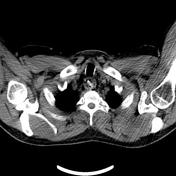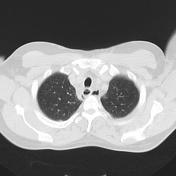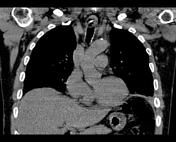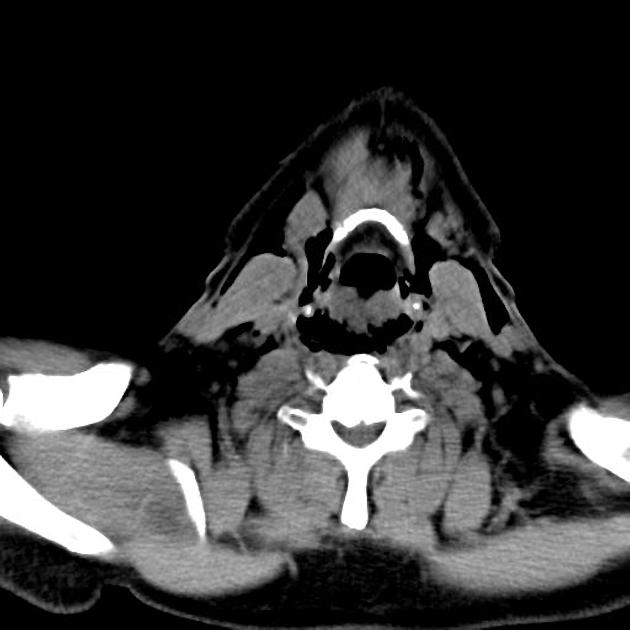Presentation
Pain post eating.
Patient Data









Pneumomediastinum, with paraesophageal/posterior mediastinal gas tracking superiorly around the infrahyoid strap muscles. Small bilateral pleural effusions, marginally larger on the left, with associated medial bibasal collapse.
An obliquely oriented, 2.1cm long X 0.4cm wide, curvilinear hyperdensity previously seen within the superior mediastinal esophagus, anteriorly adjacent to T1/2.
Within the imaged upper abdomen, a small fluid-density collection is seen around to gallbladder and hepatorenal pouch, however, there is no evidence of gallbladder wall thickening or gallstone identified. A very small fluid density collection is noted within the right anterior perirenal space. Upper abdominal organs are of unremarkable appearance.
Conclusion:
- Pneumomediastinum, reduced/redistributed since the previous examination.
- 2.1cm curvilinear hyperdensity may represent a foreign body.
Case Discussion
Culprit turned out to be swallowed chop bone.




 Unable to process the form. Check for errors and try again.
Unable to process the form. Check for errors and try again.